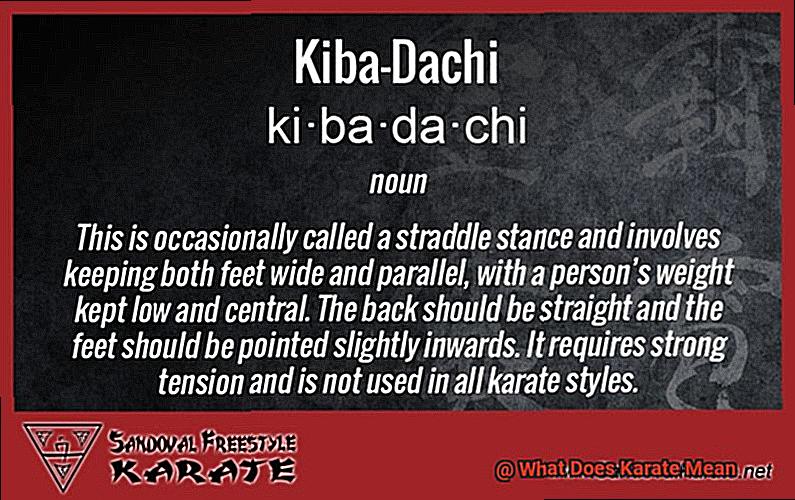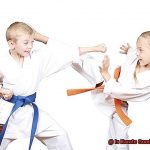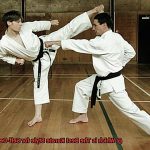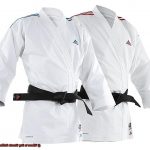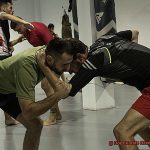Karate is much more than a martial art that has been practiced for centuries. It’s also a way of life, rooted in discipline, honor, and self-defense.
But what does it really mean? In this blog post, we’ll explore the history and philosophy behind Karate, as well as how it can help with your mental and physical fitness.
We’ll also look at the different forms of karate and how they are used today. By the end, you’ll have a better understanding of karate, its meaning, and its importance.
So let’s get started.
The Origin of Karate
Karate is an ancient martial art that has its roots in Okinawa, Japan. It was developed from a blend of Chinese and Okinawan martial arts traditions.
The term “karate” is derived from the Japanese words “kara,” meaning empty, and “te,” meaning hand.
In 1922, karate was introduced to Japan by a Chinese master named Funakoshi Gichin.
Since then, it has evolved into various styles such as Shotokan, Shito-Ryu, Goju-Ryu, Wado-Ryu, and Kyokushin. Each style has its own unique techniques and philosophies.
Today, people of all ages are embracing karate as a way to stay fit while learning self-defense skills and building confidence.
Whether you’re looking to compete or just want to learn some self-defense techniques, karate is an excellent choice.
How to Pronounce Karate: A Guide to Karate Pronunciation
Karate is an ancient martial art with roots in Okinawa, Japan, and has been around for centuries.
It is a blend of Chinese and Japanese martial arts and is pronounced “kah-rah-tay,” with the emphasis on the second syllable. The term “karate” itself is derived from two Japanese words: “kara” meaning empty and “te” meaning hand, which can be interpreted to mean “empty hand” or “the art of empty hand combat.”
Karate can be divided into two main styles: Shotokan and Wado-ryu. Both styles involve a variety of strikes, kicks, blocks, throws, and joint locks.
When pronouncing “karate” correctly, it is important to emphasize the correct syllables. The first syllable should be pronounced “kah,” while the second syllable should be pronounced “rah.”
The third syllable should be pronounced “tay,” with an emphasis on the second syllable. This pronunciation will help ensure that you are saying “karate” correctly when speaking or writing about it.
Additionally, there may be slight variations in pronunciation depending on which dialect of Japanese is used.
Karate is an incredibly versatile martial art that can be used for self-defense or competition purposes. To master all of its techniques and movements requires focus, discipline, and dedication; not only does it increase physical fitness but also mental stability because practitioners must remain calm under pressure in order to make quick decisions during a fight or competition match.
Learning karate can also boost self-confidence because mastering its techniques gives practitioners a sense of pride in themselves and their achievements.
Overall, karate is a unique martial art that has existed around the world for centuries due to its abilities as both a form of self-defense and a competitive sport.
What Is the Meaning of Karate in English?
Karate is an ancient martial art form that has been practiced for centuries. It originated from the Japanese words “kara” and “te,” which mean “empty” and “hand,” respectively.
When translated literally into English, karate means “empty hand,” referring to the fact that practitioners do not use weapons or tools when fighting.
Through mastering the techniques of karate, one can defend themselves against physical attacks without having to rely on any external sources. Furthermore, the term “karate” can also be interpreted as “Chinese hand” due to its roots in Chinese martial arts.
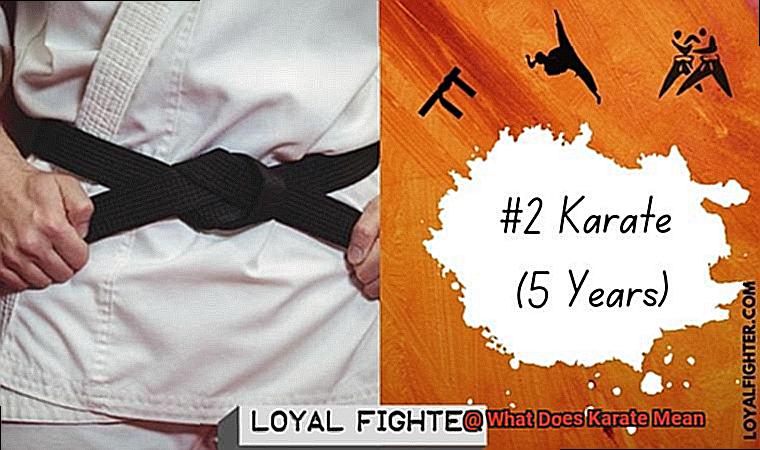
Karate is a great way to stay fit, build muscle, and learn self-defense skills. It also helps you develop mental focus and discipline. Practitioners can protect themselves against physical assaults by mastering karate’s methods without having to rely on weapons or equipment. Additionally, it is an excellent way to build confidence in your ability to shield yourself if necessary.
If you are looking for a unique way to exercise or want to learn self-defense skills, then karate is a great choice.
You will be able to become an expert in this ancient martial art form and gain confidence in your ability to protect yourself if needed.
What Does Karate Mean in Japanese?
Karate is a martial art that has been around for centuries and is practiced by many all over the world. The literal translation of Karate in Japanese is “empty hand,” which aptly describes the practice.
This term refers to unarmed combat techniques, which are based on the belief that practitioners should be able to protect themselves without relying on weapons or any other external tools.
Karate also has a spiritual component, as shown by its focus on discipline, respect, humility, and self-control. Practitioners move their bodies in various ways as they practice karate and strive to master the art.
If you want to gain a deeper understanding of this martial art, it’s important to be familiar with the literal translation of karate in Japanese. It’s not just about physical combat; it’s also about living life according to certain principles.
By learning both the physical and spiritual aspects of Karate, we can truly appreciate its value as an effective form of self-defense as well as a way of life.
The Meaning Behind the Word “Karate”
Karate is an ancient martial art that has been practiced for centuries. Its name, which means “empty hand” in Japanese, reflects the body’s use of fists to defend itself rather than weapons. But there’s more to karate than just physical techniques. It also involves mental and spiritual training to develop a strong spirit and cultivate inner peace.
Karate emphasizes respect for others, both on and off the mat. By understanding the deeper meaning behind the word “Karate”, practitioners can gain a greater appreciation for this martial art and its values. Karate teaches us how to protect ourselves while still respecting others at the same time.
It’s a healthy habit that can help us become healthier individuals in all aspects of our lives – physically, mentally, and spiritually.
Different Types of Karate Styles
Karate is an age-old martial art that has been practiced for centuries. With its many forms and styles, it offers something for everyone, from beginners to advanced practitioners. Here’s a closer look at four of the most popular karate styles: shotokan, wado-ryu, goju-ryu, and shorin-ryu.
The traditional Japanese karate style of Shotokan was developed by Gichin Funakoshi. It is characterized by linear movements and powerful strikes.
Wado-ryu combines elements of judo and karate, focusing on circular motions and throws.
Meanwhile, Goju-ryu stresses hard and soft techniques along with breathing exercises and close-range combat.
Lastly, Shorin-ryu is the oldest form of Okinawan karate; it emphasizes fast, direct attacks and low stances.
Karate can improve your physical fitness while still teaching you valuable self-defense skills.
Conclusion
Karate is an ancient martial art that has been practiced for centuries. Its roots lie in China and Japan, with the literal translation of its name meaning “empty hand.”
Karate cultivates inner peace by combining physical combat techniques with mental and spiritual preparation.
Popular styles include Shotokan, Wado-ryu, Goju-ryu, and Shorin-ryu, all of which are suitable for beginners to advanced practitioners.
Learning karate can help you stay fit while also teaching valuable self-defense skills. Whether you’re looking to compete or just want to learn some self-defense techniques, karate is a great choice that will improve your physical fitness, mental stability, and confidence.

